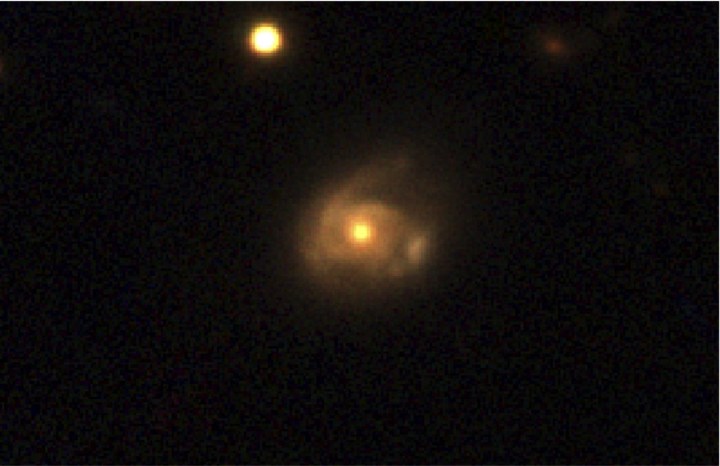Black holes can be hungry beasts, devouring anything that comes to close to them, including clouds of gas, rogue planets, and even stars. When stars get too close to a black hole, they can be pulled apart by gravity in a process called tidal disruption that breaks up the star into streams of gas. But a recent discovery shows a different phenomenon: a black hole that is “snacking” on a star. It’s not totally destroying the star, but pulling off material and nibbling at it on a regular basis.
The process has been named partial or repeating tidal disruption, as instead of a star being ripped apart in one dramatic event, it is being slowly worn down by repeated encounters with a black hole. It was observed happening to a star called Swift J023017.0+283603 (or Swift J0230 for short) by NASA’s Neil Gehrels Swift Observatory.

Each time the unlucky star passes close to the black hole, the gravitational forces cause it to bulge outward and material is stripped away from it to be eaten by the black hole. But an individual encounter isn’t enough to destroy the star, so it carries on until its orbit brings it close to the black hole once again, when more material is stripped away.
In the case of Swift J0230, the sun loses around three Earth masses of material on each encounter, and will continue to lose mass until it runs out of material and breaks apart.
This event was observed because of a new method of data analysis being used on data from the Swift Observatory, which was launched nearly 20 years ago and was primarily designed to study gamma-ray bursts. Using data from the observatory’s X-ray Telescope instrument, the team turned the instrument into a kind of survey, as it regularly observes portions of the sky, and this data is compared to previous observations. That makes it clear when a change has occurred, indicating a transient event. This flags potentially interesting objects like Swift J0230 for the team to investigate.
“Swift’s hardware, software, and the skills of its international team have enabled it to adapt to new areas of astrophysics over its lifetime,” said Swift team member Phil Evans of the University of Leicester in a statement. “Neil Gehrels, the mission’s namesake, oversaw and encouraged many of those transitions. Now, with this new ability, it’s doing even more cool science.”
Editors’ Recommendations
Services Marketplace – Listings, Bookings & Reviews